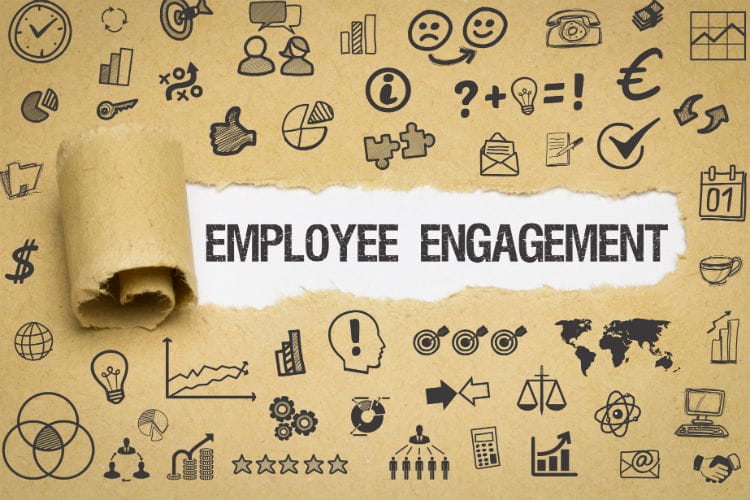The past two weeks have seen a record 10 million new unemployment claims. This number does not even include many of the millions more who have had their hours or wages cut as businesses continue to struggle with the realities of operating in a world turned upside down by coronavirus. Sadly, we should expect this situation to get a lot worse before it starts to get better.
Thankfully for each worker unemployed or underemployed as a result of coronavirus, the CARES Act provides significant financial relief. It contains the following seven unemployment expansion and enhancement provisions.
1. Pandemic Unemployment Compensation (FPUC) — This program provides funding for an additional $600 per week in unemployment benefits through July 31, 2020, for any individual who becomes unemployed, partially unemployed, or unable or unavailable to work or telework because of any of the following coronavirus related reasons:
-
- The individual has been diagnosed with coronavirus or is experiencing symptoms of coronavirus and seeking a medical diagnosis.
- A member of the individual’s household has been diagnosed with coronavirus.
-
- The individual is providing care for a family member or a member of the individual’s household who has been diagnosed with coronavirus.
-
- A child or other person in the household for which the individual has primary caregiving responsibility is unable to attend school or another facility that is closed as a direct result of the coronavirus public health emergency and such school or facility care is required for the individual to work.
-
- the individual is unable to reach the place of employment because of a quarantine imposed as a direct result of the coronavirus public health emergency.
-
- The individual is unable to reach the place of employment because the individual has been advised by a health care provider to self-quarantine due to concerns related to coronavirus.
-
- The individual was scheduled to commence employment and does not have a job or is unable to reach the job as a direct result of the coronavirus public health emergency.
-
- The individual has become the breadwinner or major support for a household because the head of the household has died as a direct result of coronavirus.
-
- The individual has to quit his or her job as a direct result of coronavirus (which one could interpret as covering employees who quit out of fear of contracting coronavirus).
-
- The individual’s place of employment is closed as a direct result of the coronavirus public health emergency.
Additionally, this program contains a non-reduction rule, which prohibits states from changing how they compute regular unemployment benefits to reduce the average weekly benefit amounts or the number of weeks of benefits payable to impacted employees.
In Ohio, this means that a minimum wage employee with no dependents would see his weekly unemployment benefit increase from $171 to $771 (an annualized salary of $40,092), and an employee with three dependents maxed out on unemployment would see his weekly benefit increase from $647 to $1,247 (an annualized salary of $64,884).
Because of this substantial increase, I am worried that many employees will decide that they are better off (either financially or for health-related reasons) quitting their jobs and collecting unemployment, leaving essential employers with huge labor gaps to fill to maintain basis minimum operations. For this reason, essential employers should be communicating with their employees on a daily basis about all of the steps they are doing to ensure, as best as possible their employees’ health and safety.
2. Pandemic Unemployment Assistance (PUA) — This program provides unemployment compensation through December 31, 2020, for individuals who are self-employed, seeking part-time employment, or who otherwise would not qualify for regular unemployment benefits because of one of the above-listed coronavirus related reasons.
3. Emergency unemployment relief for governmental entities and non-profit organizations — This program provides federal reimbursement of state unemployment payments made to governmental entities and non-profit organizations through December 31, 2020, regardless of whether the unemployment claim is related to coronavirus.
4. Temporary full federal funding of the first week of compensable regular unemployment for states with no waiting week — Through December 31, 2020, states that waive any waiting periods and provide unemployment benefits to applicants during their first week of unemployment will receive 100 percent federal funding for benefits paid during that initial week.
5. Emergency state staffing flexibility — States as provided flexibility through December 31, 2020, to modify their unemployment compensation laws and policies with respect to work-search requirements, waiting weeks, good cause standards, and employer experience rating. Ohio, for example, has eliminated its work-search requirement and waiting periods, and is not counting coronavirus related unemployment claims against an employer’s experience rating.
6. Pandemic Emergency Unemployment Compensation (PEUC) — This program provides up to 13 weeks of additional unemployment benefits through December 31, 2020, for individuals who have exhausted all rights to regular unemployment compensation under state or federal law or have no rights to regular unemployment compensation under any other state or federal law. The law requires individuals seeking PEUC benefits to be able to work, available for work, and actively seeking work. States, however, are required to offer flexibility in meeting the “actively seeking work” requirement for individuals unable to search for work because of coronavirus, including illness, quarantine, or movement restrictions.
7. Temporary financing, agreements, and grants for Short-Time Compensation (STC) — This program provides pro-rated unemployment benefits for up to 26 weeks through December 31, 2020, to employees who have had their hours reduced in lieu of layoff.







 The constant pressure, isolation and travel leads to a lot of burnout. Despite relatively high salaries, industry turnover rates among the associates is more than
The constant pressure, isolation and travel leads to a lot of burnout. Despite relatively high salaries, industry turnover rates among the associates is more than




 Making sure to include remote employees in meetings and scheduling regular check-ins is also vital for creating an inclusive environment and tracking progress, according to Carlos Castelán, managing director of business management consulting firm The Navio Group. If remote employees aren’t provided with clear expectations and direction, it can be easy to feel like they are stranded on an island. Those who work remotely need to feel a sense of purpose in order to stay motivated and passionate about the company’s goals. “One of the hardest parts of staying motivated as a remote worker is fully grasping how your contributions fit into the overall picture and mission,” Castelán said.
Making sure to include remote employees in meetings and scheduling regular check-ins is also vital for creating an inclusive environment and tracking progress, according to Carlos Castelán, managing director of business management consulting firm The Navio Group. If remote employees aren’t provided with clear expectations and direction, it can be easy to feel like they are stranded on an island. Those who work remotely need to feel a sense of purpose in order to stay motivated and passionate about the company’s goals. “One of the hardest parts of staying motivated as a remote worker is fully grasping how your contributions fit into the overall picture and mission,” Castelán said.
 So, those are two companies that I think people should visit and see how they manage these two worlds. There is this conception that kindness means soft and that isn’t it. Kindness means that you want people to fulfill their potential. So, one of the principles behind all of these companies, but certainly in Pure Insurance and Instructure, is that we want you to live a satisfying life, we want you to do what you want to do and we want you to be as good as you can be. A part of that caring is helping people to improve and become better people.
So, those are two companies that I think people should visit and see how they manage these two worlds. There is this conception that kindness means soft and that isn’t it. Kindness means that you want people to fulfill their potential. So, one of the principles behind all of these companies, but certainly in Pure Insurance and Instructure, is that we want you to live a satisfying life, we want you to do what you want to do and we want you to be as good as you can be. A part of that caring is helping people to improve and become better people.